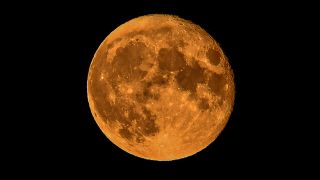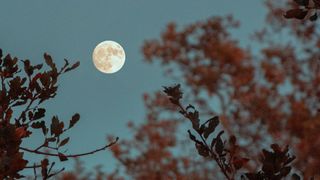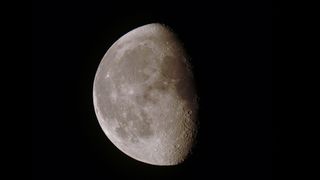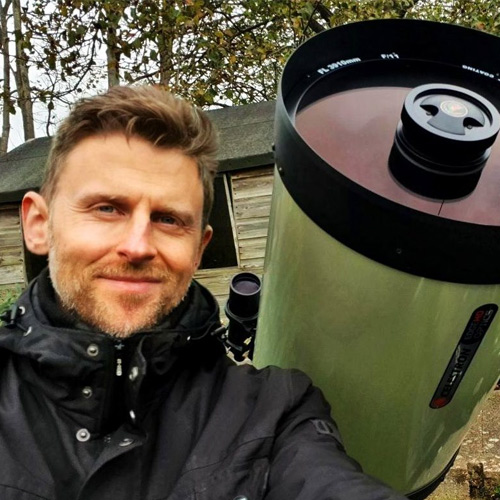How to photograph the moon using a camera: techniques, kit, and settings
These are the techniques, times and tools you'll need to photograph the moon using a camera.

Digital cameras, and the excellent lenses that are available for them, mean it's never been easier to photograph the moon.
Our nearest neighbor in space is a great object to start with if you're a beginner looking to get into astrophotography, being bright, clear, and easy to spot (unless the weather gets in the way).
You can even get surprising results photographing the moon with a smartphone, as long as you find a way of keeping it stable. You’ll need something more substantial, however, if you are keen to start capturing many of the craters, rilles, mountains and valleys that litter the lunar surface. This is where having one of the best cameras for astrophotography comes in: combine one with a good lens and a tripod, and you can easily start capturing impressive lunar photos.
Related: Moon viewing guide: What to look for on the lunar surface
Read more: Apollo landing sites: An observer's guide on how to spot them on the moon
Cameras and lenses: Things to consider
There are a few different areas of lunar photography, which require different approaches. These specific areas are:
- Wide-field, landscape-based photography with the moon in the scene
- Wide-field conjunction images where the moon is close to one or more of the brighter planets (Venus, Mars, Jupiter etc.)
- High-resolution lunar photography
- Lunar eclipse photography


When it comes to choosing cameras and lenses there are a few important points to consider. Firstly, a top end expensive camera is not necessary to achieve excellent results. It would be better to spend less on the camera body and more on purchasing high-quality lenses, since image sharpness and good color correction are crucial for top-quality results. Try one of the best telephoto zooms to get started.
There are a few different areas of lunar photography, which require different approaches. You can take wide-field, landscape-based images with the moon in the scene; wide-field conjunction images where the moon is close to one or more of the brighter planets (Venus, Mars, Jupiter etc); high-resolution photography of the moon's surface; and lunar eclipse photography.
Wide-field photography will require lenses of around 10-50mm in focal length. A high-quality, wide-angle zoom lens with a maximum aperture of f/2.8 is a great choice for this type of photography, as it will give you flexibility in framing the scene.
Typically, most kit lenses offer this kind of focal range, so you're probably already good to go here, but may have slower aperture ratings. Steer clear of lower-quality, cheap lenses if possible: this will help you avoid problems such as chromatic aberration, where fine details can appear smeared and bright, high-contrast edges (such as those around craters on the moon) are marred with spurious colors by different wavelengths of light swing brought to focus at slightly different positions.
A longer telephoto lens is necessary for high-resolution photography of the moon's features — something around the 200-400mm focal length is ideal. Again, as with wide-field work, always try and use a good-quality lens. Telephoto lenses can reveal a considerable amount of detail across the lunar disk, including impact craters on the surface. Telephoto and super-telephoto lenses are expensive, though, so there are a couple of tricks you can try to get more out of standard and 200mm zoom lenses.
You'll probably be able to get a 1.4x or 2x teleconverter that will boost your maximum reach (at the cost of one or two stops, respectively, of aperture width). That's a good solution for shooting the moon, as you won't necessarily need the lower f-numbers due to its brightness.

Wide-field photography
When it comes to taking wide-field lunar photos, which typically include some terrestrial foreground, there are several points to consider. The camera should be mounted on a firm tripod to prevent it from wobbling, and to allow careful framing of the scene. Composition is crucial to good results, and it can be worth traveling out into the countryside if you live in a built-up, and brightly lit, city location.
For something as bright as the moon you'll be shooting at a pretty low ISO of 100-400 to keep noise to a minimum. A remote cable release is helpful — but not essential — since you can also use the camera self-timer to avoid camera shake when taking the shots.
Focus the scene carefully — autofocus can work well on the moon, but if it's struggling try manual focusing using live view, zooming in on the screen to make sure the detail is sharp. Exposure times will vary depending on the lighting conditions, but try shooting between f/6.5 and f/9 to get a well-balanced shot.
The best times to shoot wide-field lunar photos are during sunset or sunrise, particularly when the moon presents a crescent in the twilight sky, or when it is placed close to one of the brighter planets. Moonrise and moonset produce especially striking images, with the deeply colored lunar disk presented against a foreground scene.
Wide-angle lenses are also useful for images of the night sky, which is another good starting point for budding astrophotographers. For more tips, especially on composition, check out our guide to effective landscape photography.

Shooting close-ups
Close-up photos of the moon present different considerations. For shooting at long focal lengths, a good stable tripod is essential, but you also need to focus the image carefully. We prefer using live view for close-ups and zooming in to really get a clear view of what the camera is seeing.
The phase of the moon itself plays a role in the appearance of the lunar features that are visible in close-up photos. When the moon is close to full, the disk can look quite flat due to sunlight falling directly onto it. A better time to try taking close-up photos is when the moon is away from being full — around half phase — so that the sun's rays are perpendicular to the surface and really bring out its rugged topography, which is dotted with shadow-filled craters, bright highlands, and dark valleys.
The camera’s ISO again is typically low (100-400) and exposure times are short. Of course, this will vary depending on the lunar phase and the aperture you are shooting at. When taking such images, it’s always a good idea to stop down the lens a little, as many lenses produce their sharpest images when not wide open (using f/4 to f/9 instead of f/2.8 for example). Remember that the moon is constantly moving (it travels at 2,288mph), and Earth is rotating too, so longer exposures won't produce the best results. For close-ups we find the best results happen around 1/125 to 1/500 second, and if you can achieve that with an aperture of between f/6.5 and f/13, you'll end up with a crisp, clear photo.
Of course, there's an exception to the above, and that's during a lunar eclipse. These occur when the moon becomes either partially or completely obscured by Earth's shadow, and can see the moon turn a striking coppery color, giving rise to the 'blood moon' description. During a total lunar eclipse the moon becomes fainter than normal, so longer exposure times are required, along with higher ISO settings for extra sensitivity.
The moon is the perfect target for photography. And thanks to the sheer number of cameras vying for your attention in today's marketplace, you don't have to spend too much money to achieve it. From soft evening sunset portraits to close-up views of the airless and rugged surface, the moon always offers something interesting for photographers old and new.
Join our Space Forums to keep talking space on the latest missions, night sky and more! And if you have a news tip, correction or comment, let us know at: community@space.com.
Get the Space.com Newsletter
Breaking space news, the latest updates on rocket launches, skywatching events and more!
Damian A. Peach FRAS is a British amateur astronomer, astrophotographer, lecturer and author. Best known for his photographs of a wide variety of astronomical objects. His career in the field spans over thirty years. Peach's passion for Astronomy first began in 1988 inspired by books in his school library. Later he joined the British Astronomical Association (BAA) in 1996 and since then has contributed large amounts of observations to the various observing sections and also written and co-authored many papers in the organization's journal. He was awarded the organization's prestigious Merlin Medal in 2006. The same year he was also awarded the Association of Lunar and Planetary Observers (ALPO) Walter H. Haas award for his contributions. Peach has provided astronomical images for magazines and books throughout his career. His images have been featured in Astronomy Magazine, Sky & Telescope, Astronomy Now & The Sky at Night. He has also authored articles on astrophotography for these magazines. Peach has also been a co-author on several professional scientific papers on planetary astronomy, especially regarding work on Mars and Jupiter. He was one of only a few amateur astronomers to have work featured as part of the national Explorers of the Universe exhibition at the Royal Albert Hall in 2007. His work has also appeared at the Edinburgh Science Festival, and The Royal Greenwich Observatory. Peach's work has also been used by NASA and ESA to illustrate what ground-based telescopes can achieve in photographing the planets, and the support they can provide to professional space probe missions.
- Ian EvendenContributor
- Andy HartupContributing Editor
